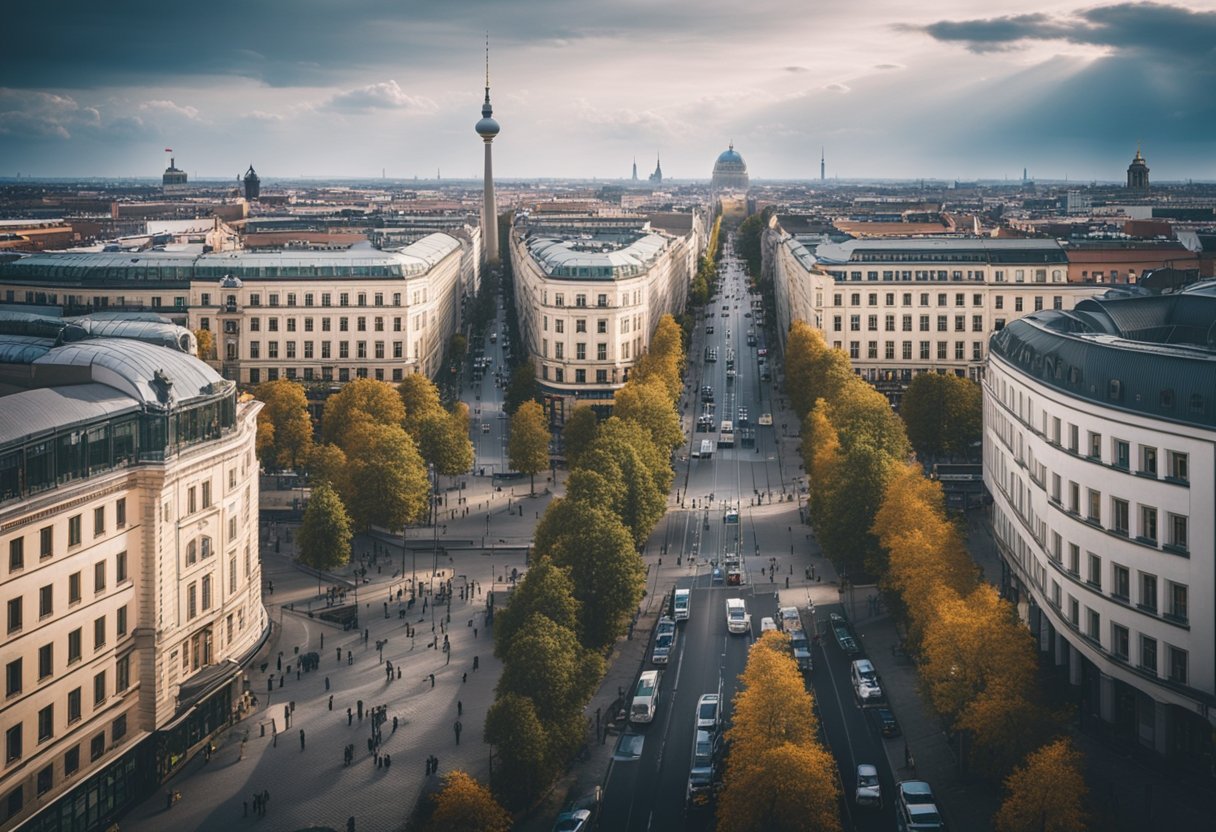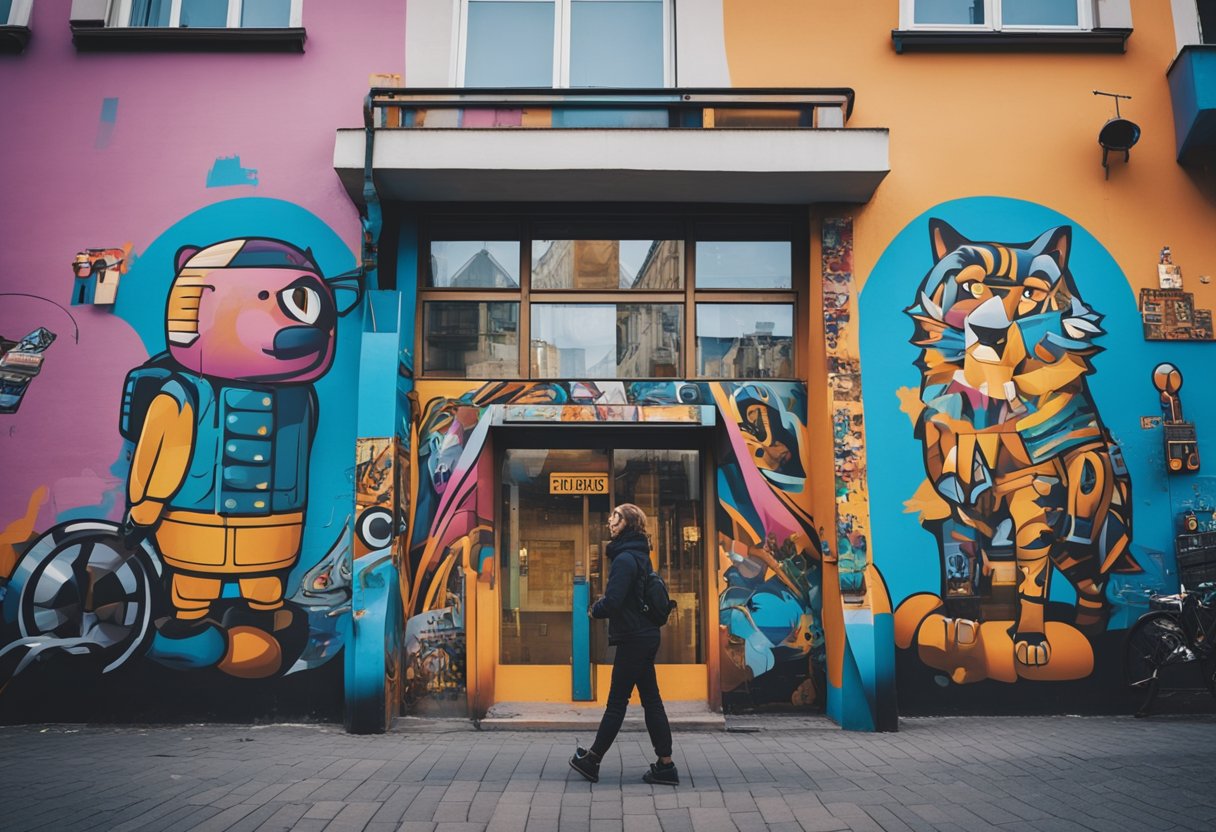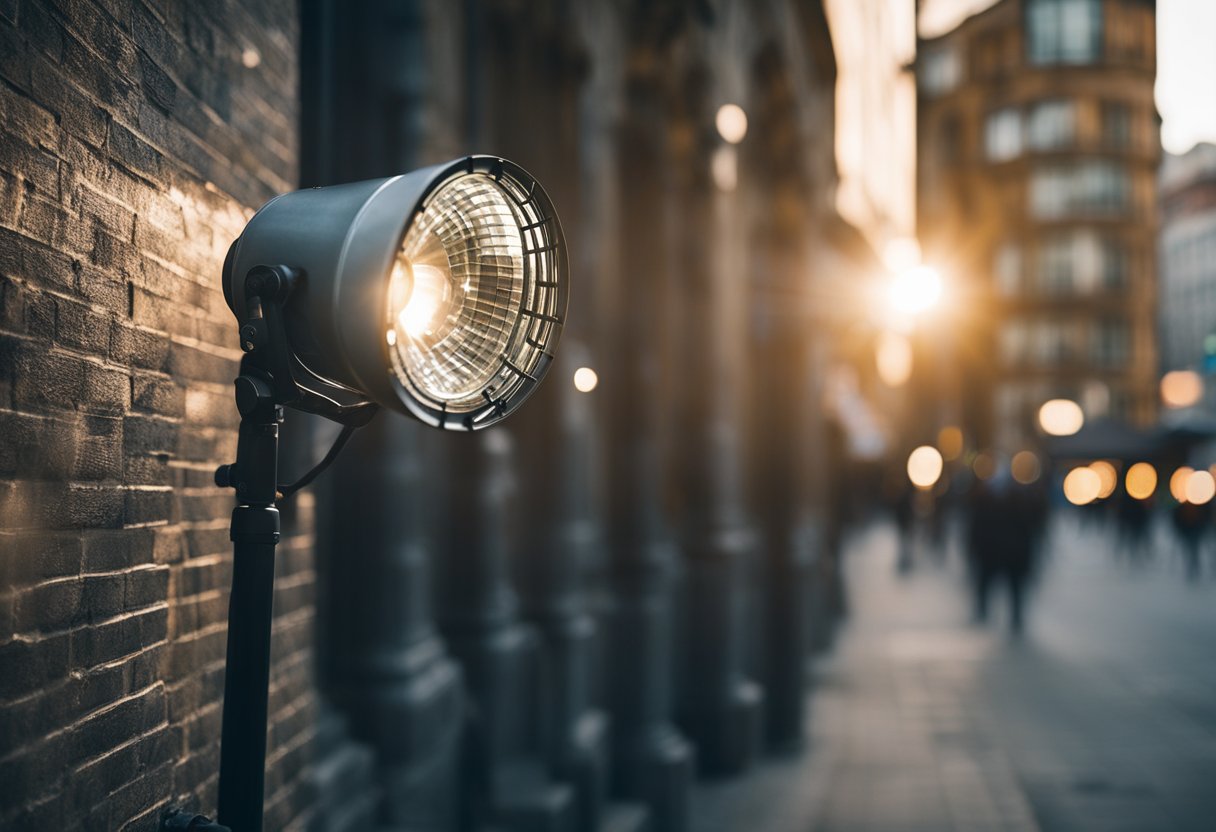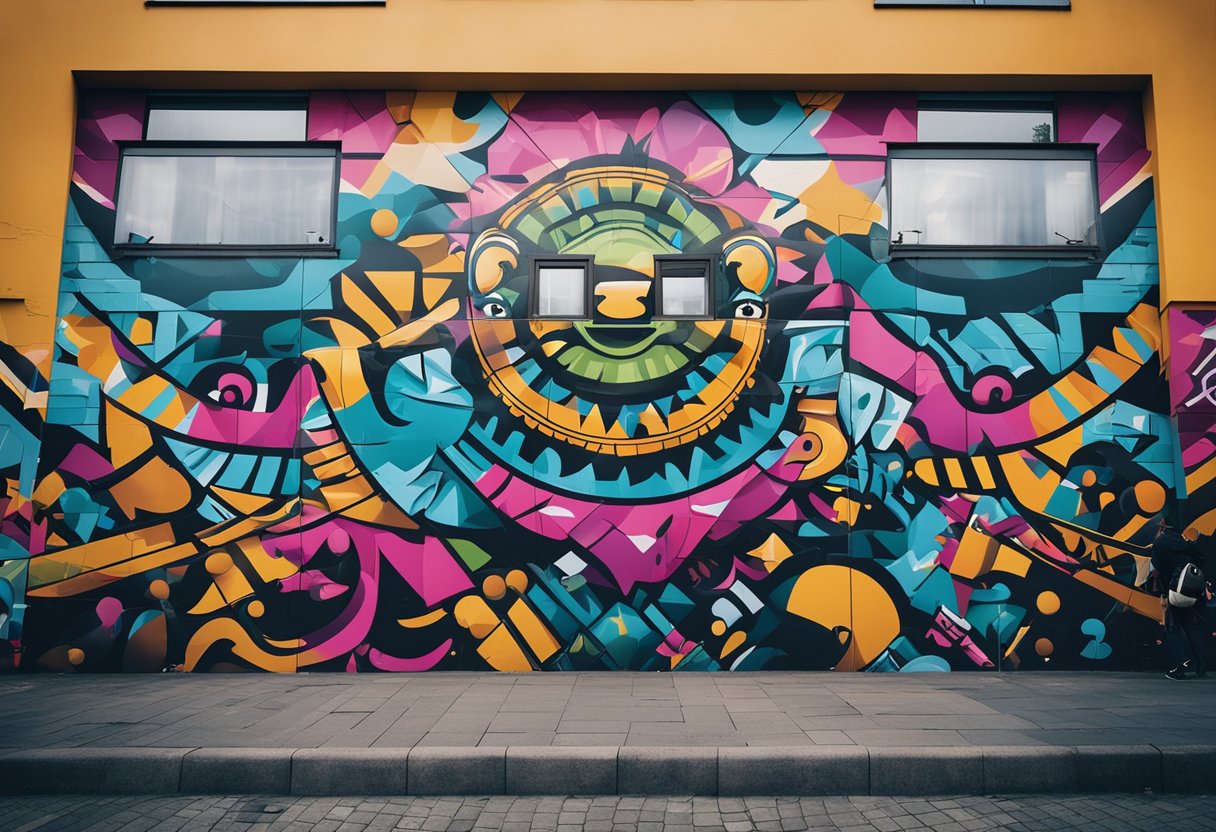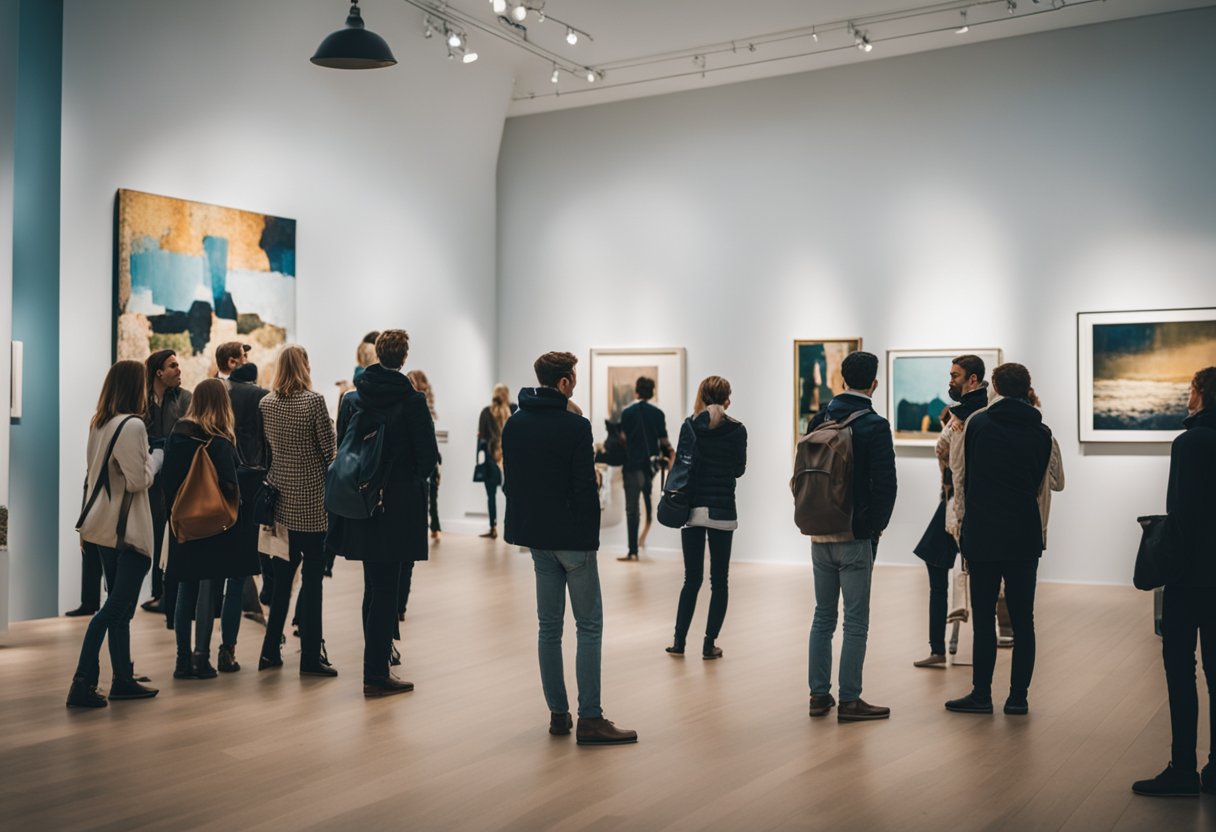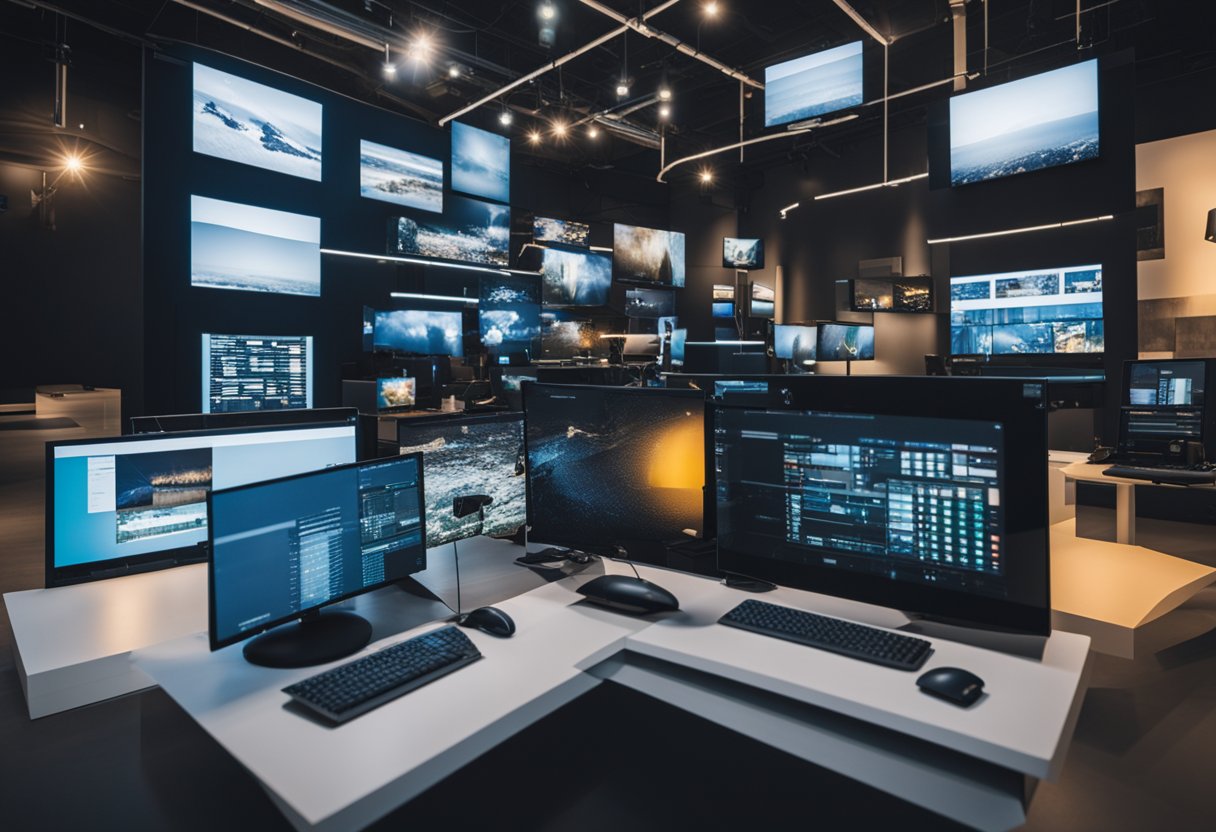In the bustling metropolis of Berlin, the spirit of creativity and expression thrives through various forms, one of which is Makeart Berlin, a unique platform that embodies the city’s innovative and artistic heartbeat.
Our identity as Berliners resonates with our passion for art, a passion that Makeart Berlin brings to life through its bio-quality fabrics adorned with distinctive and striking designs. The dedication to craft resonates deeply with us, as it mirrors the persevering spirit of Berlin’s own diverse art scene.
Where does Make Art Berlin get inspiration? lets explore
We understand the importance of individuality and personal expression, which reflects in every fabric pattern and design originating from Makeart Berlin.
Their approach to creating art is deeply rooted in the city’s culture, where every design is a testament to the relentless imagination and ingenuity that we value. From vivid and bold colors to subtle shades, the designs not only capture attention but also inspire creativity among those who engage with them.
By channeling the eclectic energy of Berlin, Makeart Berlin stands as a testament to the city’s enduring love affair with art. Whether it’s through wearing one of their creations or simply appreciating the artistry behind them, we acknowledge and celebrate the influence that such local initiatives have on our rich cultural tapestry. Inspired by the city’s historical backdrop and contemporary flair, Makeart Berlin contributes to the vibrant and ever-evolving art scene that we are profoundly connected to.
The History of Street Art in Berlin
Berlin’s street art legacy is deeply intertwined with its historical events, particularly the Berlin Wall, which served not only as a physical divide but also as a canvas that reflected the zeitgeist of its era.
Berlin Wall as a Canvas
The Berlin Wall, standing as a symbol of division during the Cold War, inadvertently became a medium for expression and protest. We saw artists use this immense concrete barrier to voice their dissent and depict their yearning for freedom. Berlin became known for these iconic images that were both a witness to and a commentary on the political atmosphere of the time.
East Side Gallery: An Open-Air Exhibit
After the fall of the Berlin Wall in 1989, one of its remaining stretches was transformed into the East Side Gallery. It’s an extraordinary segment of the wall adorned with murals that we regard as a memorial to freedom. The Gallery showcases over 100 paintings by artists from around the world and stands as one of the largest permanent open-air exhibits, attracting visitors keen to explore Berlin’s street art heritage.
Influence of the Cold War on Berlin Art
The influence of the Cold War on Berlin’s art can be seen in the drastic shift from repressive grayness to a vibrant art scene. Before the wall’s demolition, western graffiti artists were compelled to make their mark on eastern Germany. They sought out these new, unclaimed spaces with vigour, aiming to encapsulate the essence of liberty through their art. This pivotal moment fostered an environment that allowed street art to flourish across Berlin.
Spotlight on Notable Street Artists
Berlin’s streets offer a canvas for renowned artists whose works are not confined to galleries but live in the urban landscapes. We’re highlighting several influential street artists who have left their indelible marks on Berlin’s vibrant street art scene.
Banksy’s Marks on Berlin
Banksy, the enigmatic British street artist, has notably contributed to Berlin’s street art narrative, even though many of his works haven’t survived. However, his distinctive stenciled pieces once echoed political commentary and sparked conversations among locals and visitors alike. Banksy’s art often captures the tensions and cultural dynamics of the spaces they inhabit.
Shepard Fairey and Public Spaces
Shepard Fairey, the American street artist, propelled to fame with his “Obey” campaign and the iconic “Hope” poster of Barack Obama, has played a significant role in shaping Berlin’s street art. Fairey’s commitment to social activism through his art is seen on Berlin’s walls, where his pieces often encourage viewers to question the status quo and engage with the environment around them.
Thierry Noir’s Iconic Contributions
Thierry Noir is famously recognized for being one of the first to paint the Berlin Wall. Characterized by bright colors and bold lines, his simplistic figures have become symbols of freedom and the repressive divide that the Wall represented. Noir’s work contributes to the collective memory of Berlin’s turbulent history and its transformation over the years.
Dmitri Vrubel and the Fraternal Kiss
Dmitri Vrubel’s work is immortalized by his iconic painting of the “Fraternal Kiss” between Soviet leader Leonid Brezhnev and East German President Erich Honecker on the Berlin Wall. This piece, steeped in historical context, has become a landmark of East Side Gallery and a poignant reminder of Berlin’s past as a city divided.
Exploring Urban Art Districts
Berlin’s urban art scene is a dynamic tapestry woven into the city’s very fabric, with districts like Mitte and Kreuzberg standing out as vibrant canvases of creativity. We’ll guide you through these areas to discover why they are essential to understanding Berlin’s heart and soul in street art.
Mitte: The Heart of Artistic Activity
In Mitte, the historical center of Berlin, we find the birthplace of the city’s street art movement. It’s where you can trace the lineage of urban art back to the days when artists left their mark on the Berlin Wall. Today, Mitte’s buildings are adorned with art that captures the essence of the city’s transformative energy. We witness the confluence of past and present as modern murals and installations add new layers to the narrative, right in the bustling heart of Berlin.
- Famous Street Art spots in Mitte:
- Explore the area around Hackescher Markt for concentrated urban art.
- Discover intricate murals by various artists lacing the walls near Alexanderplatz.
Kreuzberg: A Melting Pot of Creativity
Kreuzberg is synonymous with diversity, and this is vividly reflected in its street art. As we stroll through this lively neighborhood, it’s evident how the district’s rebellious spirit fuels a distinctive and bold artistic expression. From the expansive murals that speak of social issues to the stenciled side streets offering a more intimate art encounter, Kreuzberg’s voice is loud and clear.
- Highlights of Kreuzberg’s Street Art:
- The Oberbaum Bridge area showcases a spectrum of urban art styles.
- Oranienstraße serves as a canvas for thought-provoking graffiti and stickers.
By visiting these districts, we immerse ourselves in Berlin’s ongoing dialogue between art and urban space, where every wall tells a story.
Contemporary Art and Its Venues
In Berlin, we’re surrounded by a landscape where contemporary art thrives in unique spaces. From museums showcasing the progression of modern art to unconventional locales like Teufelsberg that have been reclaimed by artists, our city melds historical context with artistic innovation. Flea markets, too, serve as dynamic platforms for artistic expression within our vibrant art world.
Berlin’s Museums Showcasing Modern Art
We take pride in our world-renowned institutions such as the Neuen Nationalgalerie and the Hamburger Bahnhof which are cornerstones for modern and contemporary art in Berlin. Contemporary Fine Arts, or CFA, regularly features cutting-edge artists spanned across numerous mediums. Similarly, spaces like the KW Institute for Contemporary Art engage with the topical questions shaping our society through the lens of the international art scene.
Teufelsberg: From Military to Murals
Once a US military listening station during the Cold War, Teufelsberg is now a canvas for artists wielding spray cans instead of espionage equipment. The structure stands as a testament to Berlin’s rebirth, representing how places with military pasts can evolve into symbols of peace, covered in murals that speak to the city’s vibrant soul.
Berlin Flea Markets as Art Hubs
Our flea markets aren’t just about vintage finds; they’re cultural hotspots where the grassroots of contemporary art flourish. At places like the Mauerpark flea market, artists display their original works, merging the entrepreneurial spirit with artistic creation. This transforms everyday commercial spaces into melting pots of creativity, allowing us both to discover and contribute to the ever-changing tapestry of our local art world.
The Role of Technology and New Media
In the world of art creation, we witness an ever-evolving landscape where technology profoundly influences how we, as artists, conceive and express our visions. With our hands on the pulse of modern artistry, we embrace the tools and mediums that transform our experiences and perspectives into tangible realities.
Technology has undoubtedly broadened our horizons, enabling a seamless blend of traditional techniques with innovative processes. Photography, for example, goes beyond merely capturing images; it becomes an art form enriched by digital manipulation, breathing new life into every shot. We utilize advanced software to enhance colors, blend textures, and layer concepts that redefine photographic boundaries.
As graphic designers, we leverage the latest software suites to craft designs that communicate and captivate. It’s not just about aesthetics; it’s about delivering messages in visually striking ways that resonate with audiences. We sculpt digital canvases where every pixel serves a purpose.
New media art, encompassing art forms like digital installations and interactive experiences, invites us to explore the melding of creativity with electronic media technologies. In our endeavors, we:
- Experiment with holography, data, and code
- Craft kinetic and immersive soundscapes
- Design light installations that transform spaces
- Create artworks that navigate the intersections of the digital and physical worlds
We delve into these domains with confidence, acknowledging that our artistic journey is one of continuous adaptation and learning. Technology and new media do not merely supplement our creations; they are indispensable components of the narratives we weave and the experiences we share.
The Intersection of Art and Architecture
In our explorations around Berlin, we see a city where art is not confined to galleries and architecture is more than the mere provision of shelter. The melding of these two disciplines forms an urban canvas where every structure tells a story.
Our first observation is the impact of urban art on architecture. Berlin’s buildings become artworks in their own right, adorned with murals and street art that make political statements or challenge social norms. This marriage of art and architecture is almost a tradition here, resonating with history while beckoning toward future possibilities.
We witness a dynamic relationship between the two fields, with buildings designed to inspire just as powerfully as any sculpture or painting. For instance, the clean, minimalist lines of modernist architecture in Berlin underscore the city’s progressive spirit and provide a backdrop to vibrant public art, showcasing how aesthetic and function meet.
Here’s how we can summarize the dialogue between art and architecture in Berlin:
| Art | Architecture |
|---|---|
| Enhances public spaces | Serves as a canvas for artistic expression |
| Reflects cultural identity | Shapes the cityscape |
| Engages the community | Houses art, blending form with purpose |
We hold that understanding the intersection of art and architecture offers profound insights into the cultural heartbeat of Berlin. Through impactful designs and innovative expressions, the city reveals that when art and architecture converge, they spark visual conversations that engage not just critics and connoisseurs but every one of us who encounters them.
The Power of Collaboration in Art Creation
Art creation is often visualized as a solitary process, but in our experience at Make Art Berlin, the act of coming together to create art can be incredibly enriching. We find that collaboration fosters a unique synergistic energy, driving innovation and providing a fertile ground for new ideas.
- Collaboration: When we join forces with other artists, our individual perspectives merge, allowing us to transcend our limitations. This unified approach not only amplifies our creative voice but also broadens our reach.
- Organization: Structuring our collective efforts requires coordination. By setting clear roles within the group, we ensure a cohesive and efficient workflow, where each member’s strengths are highlighted and utilized.
We approach each project with an understanding that our combined skills and knowledge shape the art we create in profound ways. By valifying each other’s input, our collaborative pieces become more than just the sum of their parts—they evolve into a testament to the power of collective work within our vibrant community.
Below is a quick overview of collaboration in our approach:
| Collaboration Aspect | Our Approach |
|---|---|
| Brainstorming | Pooling ideas and selecting the most viable |
| Role Assignment | Aligning tasks with individual strengths |
| Execution | Working in tandem to bring the project to life |
| Finalizing | Revising collaboratively for a cohesive outcome |
Our aim is to continue fostering an environment where artists feel empowered to collaborate, ensuring that Make Art Berlin stands as an example of how joint creativity can produce extraordinary results.
Art and Engagement
In Berlin, art isn’t just a static experience; it’s a dynamic form of dialogue and learning. Through initiatives like street art tours and our newsletter, we actively promote the message that art is an essential tool for cultural education and community engagement.
Street Art Tours as Educational Tools
We organize street art tours that serve as educational tools, offering participants a deeper understanding of Berlin’s rich urban art scene. These tours are not only about appreciating the aesthetics of street art but also about understanding the social and political commentary behind the works. By showcasing the history and the stories behind each piece, we illuminate the influence of street art in shaping public discourse.
Newsletter and Online Platforms for Artist Promotion
Our newsletter is a curated platform where we recommend artists and inform readers about upcoming exhibitions, performances, and street art news. It’s an essential conduit for artists to gain visibility and for art enthusiasts to stay connected with the heartbeat of Berlin’s art world. We pair this with our online platforms to create a comprehensive suite for artist promotion, ensuring that the vibrant talent of Berlin’s artists receives the recognition it deserves.
Street Art’s Influence on Culture and Society
In our examination of street art’s impact, we witness how it transcends mere vandalism to become a powerful cultural and societal force. This art form allows us to experience and understand the underlying narratives that shape our communities.
ROA and the Animal Kingdom
Belgian artist ROA is renowned for his monochromatic, large-scale depictions of animals, which have become significant in the realm of urban art. ROA’s work often highlights species native to the area he’s painting, prompting us to consider our relationship with nature and the environment. His murals are found worldwide and serve as a stark reminder of the delicate balance between urban development and natural habitats.
Graffiti’s Reflection of Societal Issues
Graffiti art is not just about aesthetics; it’s a visual dialogue reflecting society’s pulse. Artists utilize city walls to comment on political issues, social injustices, and the triumphs and trials of daily life. This form of urban art becomes a public forum, broadcasting the voices of the marginalized or highlighting prevailing societal attitudes. By engaging with their communities, graffiti artists transform public spaces into catalysts for conversation and change.
Future Perspectives
In this section, we’ll explore the evolving landscape of Berlin’s art scene, where sustainability and innovation are at the forefront. These themes are not only critical for the integrity and vitality of our cultural expressions but also for setting a precedent for future generations of artists.
Sustainability in Art Practices
We’re witnessing a considerable shift towards sustainable practices in art creation and curation. This has been a recurring theme at events like Berghain, where the future of art intersects with conscious material use and energy conservation. Take, for example, the banner of Rirkrit Tiravanija at Berghain, which symbolizes a movement towards eco-conscious art installations. The practices of upcycling and employing renewable materials are becoming increasingly common in exhibitions throughout Berlin, showing a strong commitment to reducing the environmental impact of art.
- Materials: Use of recycled and eco-friendly materials
- Energy: Adoption of renewable energy sources for art installations
- Education: Workshops on sustainable art practices
Emerging Artists Shaping the Art World
Berlin’s art scene is dynamic, with emerging artists playing a key role in defining contemporary cultural dialogue. These artists often harness the power of collaboration and technology to push creative boundaries. Much like the Studio. Berlin exhibition that connected artists with techno culture, there’s a growing trend of multisensory experiences. These experiences are not just about visual appreciation; they’re about interactive and immersive art that challenges our perceptions.
- Technology: Integration of digital and interactive mediums
- Collaboration: Cross-disciplinary projects combining science, technology, and art
- Platforms: Development of online galleries and virtual reality exhibitions
By embracing sustainability and supporting emerging artists, we contribute to a resilient and innovative art world, ready to reflect and adapt to the ever-changing dynamics of society.
